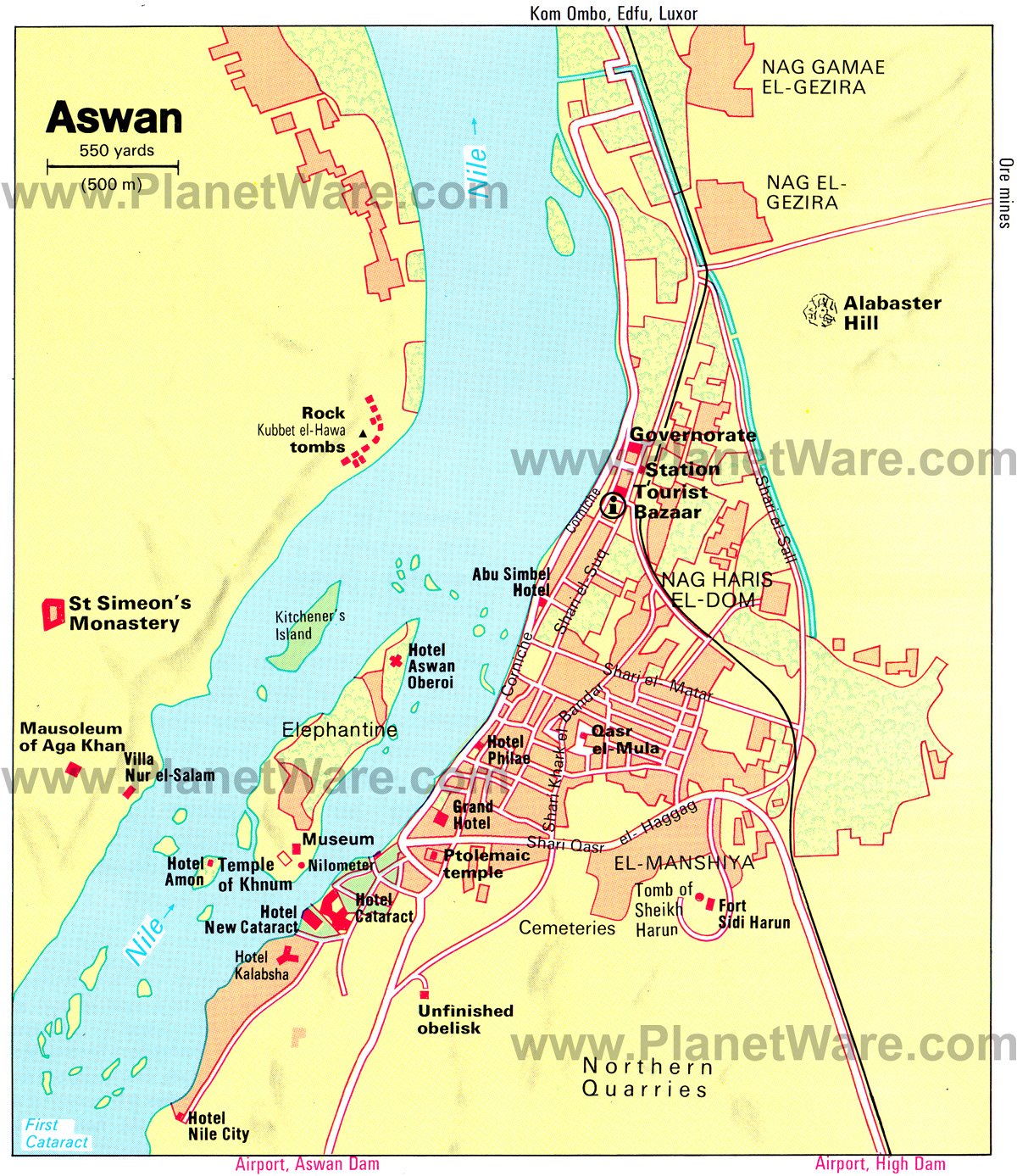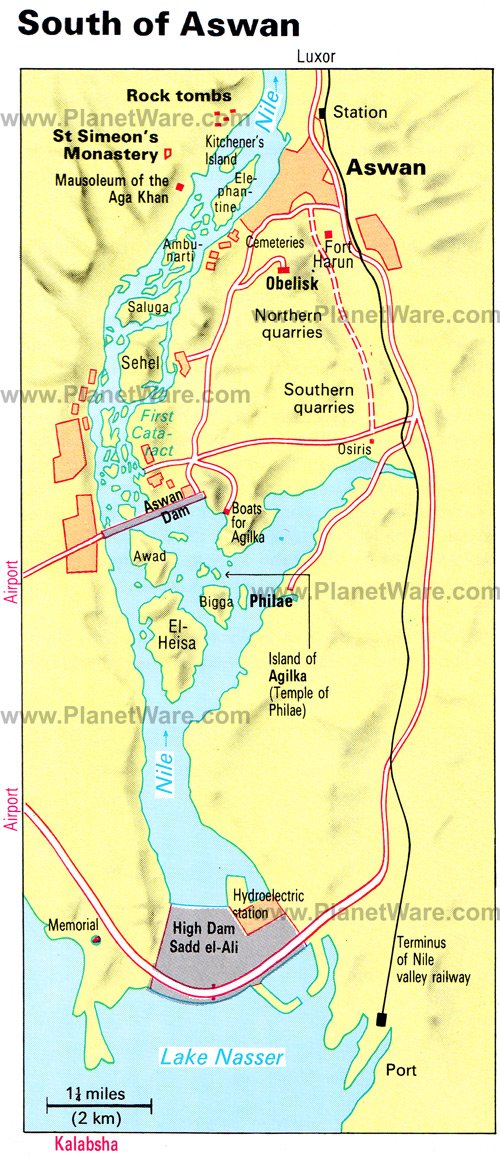Aswan
Aswan
Top Tourist Attractions in Aswan
1 Elephantine Island
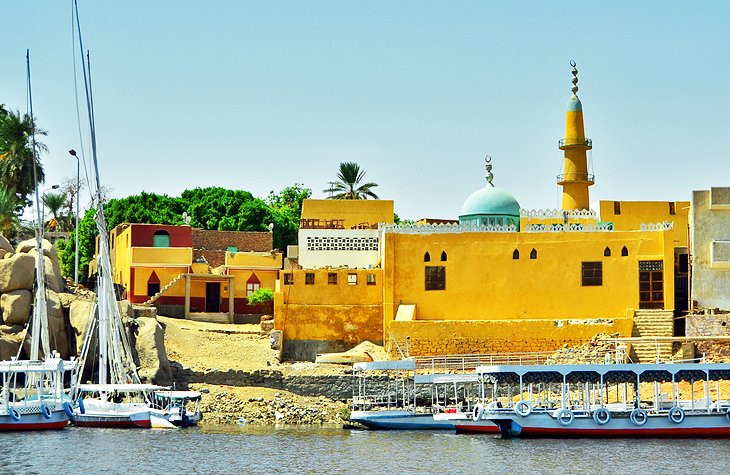
Peppered with palm tree plantations and sloping villages of colorful mud-brick houses, Elephantine Island is Aswan's major highlight. At its southern end are Aswan Museum (currently not open) and the Ruins of Abu, Aswan's most ancient settlement, which contains the Old Kingdom Temple of Khnum and the Temple of Satet. On the eastern embankment near the ruins and down a flight of steps is Aswan's Nilometer. Ancient Egyptians measured the Niles rise and fall with these stone-hewn wells allowing them to estimate the height of the annual flood and thus predict the success of their harvest.
Once you've finished exploring the ruins head north into the island to wander the backstreets of the villages of Koti and Siou where the houses are painted with vibrantly colored designs. Sheep graze, and chickens peck in the narrow alleyways, and farmers till their gardens as they have done for centuries. From the boat landing on the western side of the island in Siou you can catch a rowboat to Kitchener's Island. Now officially known as Aswan Botanical Gardens (though no one actually calls it that) this island was once the property of Lord Kitchener who transformed it into a verdant garden of exotic plants from Asia and Africa.
There are frequent local ferries from the boat landing in downtown Aswan to Elephantine, or you can also hire a felucca to sail you around the island.
2 Nubia Museum
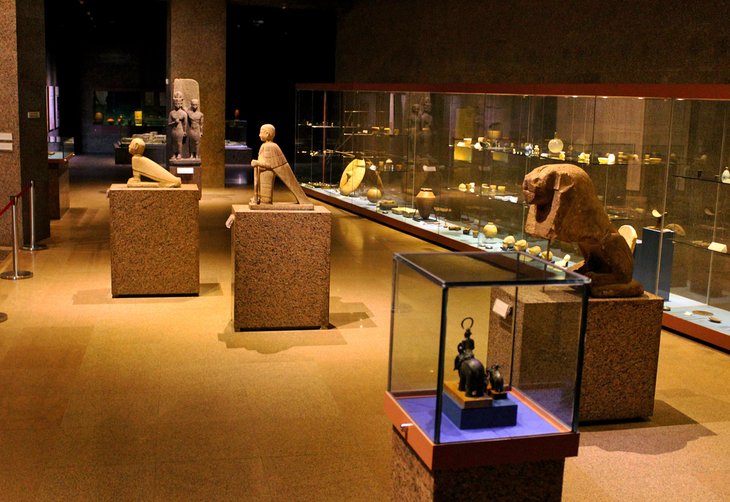
Aswan's rather fantastic Nubian Museum is one of Egypt's best and a must for anyone interested in the history and culture of both ancient and modern Nubia. It documents the riches of a culture that was all but washed away with the building of the Aswan Dam and creation of Lake Nasser. There is an excellent collection of artefacts from the Kingdom of Kush (ancient Nubia) and plenty of wonderful black-and-white photos of UNESCO's incredible project to save Philae Temple and Abu Simbel from the rising waters of the dam (along with extensive photographs of the huge range of other monuments that are now lost forever under the lake's waters).
The artefacts in the museum collection include a statue of Ramses II, a statue of Amenras, the head of the Shpatka, and the black granite head of Tahraqa. As well as thoroughly explaining the history of Nubia and its people, the ethnographical section displays gorgeous Nubian handicrafts and folk art.
Don't miss the slumping mud-brick mausoleums of Aswan's Fatimid cemetery, just behind the Nubian Museum. The cemetery caretakers are happy to take visitors on a tour and can point out the most interesting mausoleums for you. Don't forget to leave them a small tip.
Address: Abtal al-Tahrir Street
3 Philae Temple
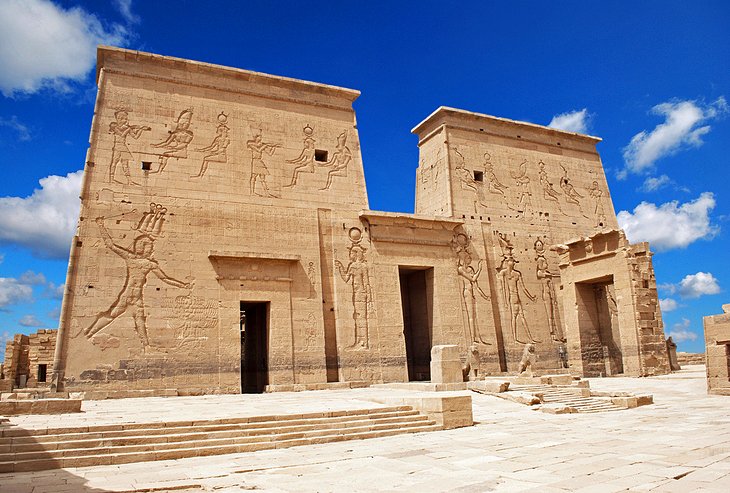
The sacred Temple of Isis (more commonly known as Philae Temple) is one of Upper Egypt's most beguiling monuments both for the exquisite artistry of its reliefs and for the gorgeous symmetry of its architecture, which made it a favorite subject of Victorian painters. Like Abu Simbel, the temple was saved by the rising waters of Lake Nasserby UNESCO's rescue project and moved lock-stock-and-barrel from its original home on Philae Island to nearby (higher) Agilika Island where it sits today.
The Temple of Isis, a center for the ancient cult of Isis, is the main part of the Philae complex, but the island is also home to the Temple of Hathor, the Kiosk of Trajan,and various other buildings from the Roman and Byzantine periods. You can easily reach the temples by taxi from Aswan, although most people arrive here as part of an Abu Simbel day trip tour.
Location: Lake Nasser area, 12 kms south of Aswan
4 Unfinished Obelisk
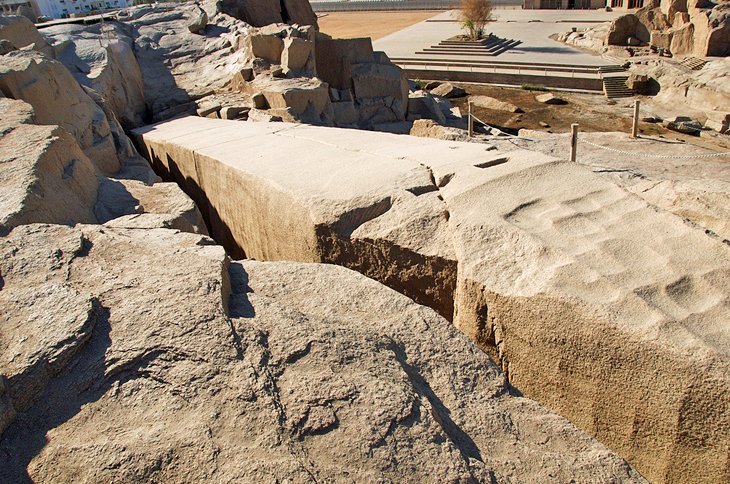
Aswan's Northern Quarry is home to the famous Unfinished Obelisk - a 41-meter-long and four-meter-wide chunk of stone that was probably abandoned because of a crack in the rock. It's estimated that if completed, the obelisk would have weighed 1,168 tons and would have been the largest ever hewn. On the surrounding rock faces, you can also see the many traces of the work of ancient stonecutters. The blocks here would have been detached from the rock by boring holes along a prescribed line, driving wedges into these, and then soaking the wedges with water to detach the block.
You can easily walk to the Northern Quarry area from Aswan's downtown area. It is just east of the Fatimid cemetery and the Nubian Museum.
Location: Northern Quarry, Al-Haddadeen Street
5 Aswan High Dam
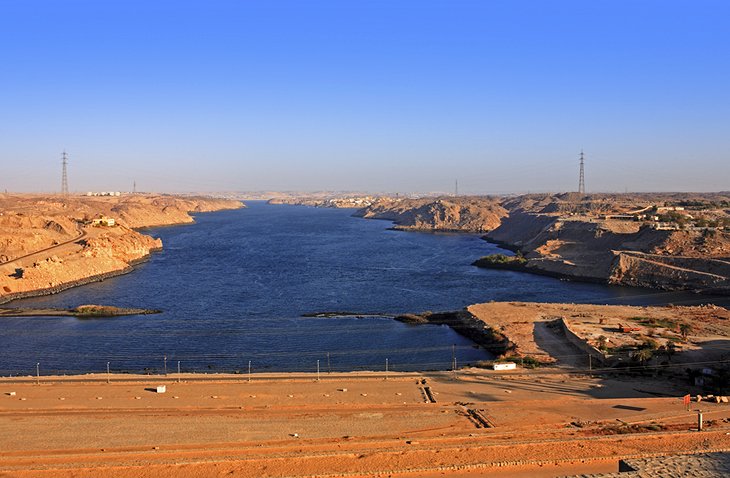
Aswan's High Dam is modern Egypt's most lauded and yet controversial building project. Begun in 1960 and taking 11 years to complete, the dam was President Nasser's pet project and greatest achievement and was achieved through funding and technical help from the Soviet Union. The High Dam has some staggering statistics. Its building took 42.7 billion cubic meters of stone (17 times the volume of the Pyramid of Cheops) with its total length being 3.6 kilometers. It is 980 meters thick at the base and 40 meters at the top. The average capacity of the dam's reservoir (Lake Nasser) is 135 billion cubic meters with a maximum capacity of 157 billion cubic meters.
The dam brought fantastic benefits to the country, allowing sustainable electricity across the country and increasing the amount of arable land in Egypt. However, it also put an end to the annual Nile flood, which fertilised farmer fields with its rich silt deposits, and the creation of Lake Nasser (the world's largest artificial lake) wiped away much of Upper Egypt's vast heritage as the waters rose.
A four-lane highway runs across the top of the dam where there is a triumphal arch and an inscription commemorating the completion and the cooperation between Egypt and the Soviet Union to build it. Trips to the Aswan High Dam are often included on day trips to Abu Simbel, or you can easily hire a taxi to get here.
Location: 17 kms south of Aswan
6 Monastery of St. Simeon
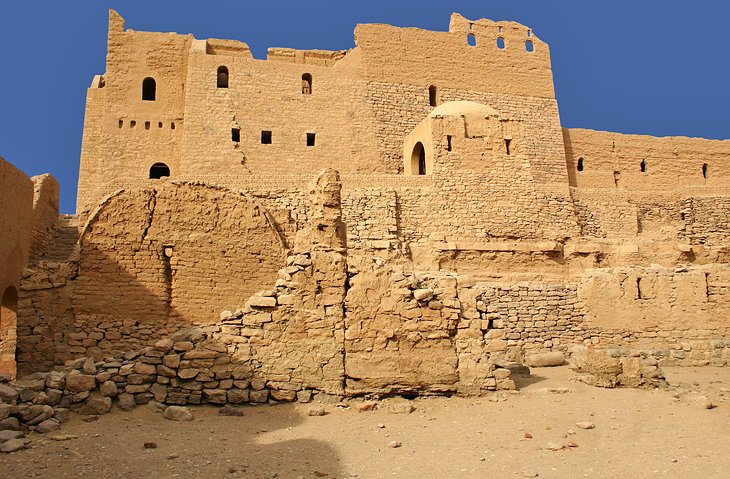
The gloriously photogenic Monastery of St. Simeon sits between the sand dunes on the Nile's West Bank. Founded in the 7th century and finally abandoned in the 13th century due to water shortages, it's one of the largest and best preserved Coptic monasteries in Egypt.
Inside the monastery courtyard, an aisled Basilica takes up the southern side of the monastery. At the east end of the wide nave, once covered by two domes, is the large apse, with three rectangular niches under semi domes. In the central niche are the remains of a fresco depicting Christ enthroned between angels. To the north and west of the church are various subsidiary buildings and small grottoes, while the eastern side is made up of living quarters. Upstairs, are some more well-preserved barrel-vaulted living quarters, including the monk cells, with brick beds and Coptic and Arabic inscriptions upon the walls.
Standing on the monastery's fortified walls, overlooking the undulating dunes gives some sense of the isolation the monks who lived here must have faced. Today, you can hire a boat or felucca to take you to the monastery boat landing and then either hike or take a camel ride (30 minutes) into the sand to get here.
Location: West Bank
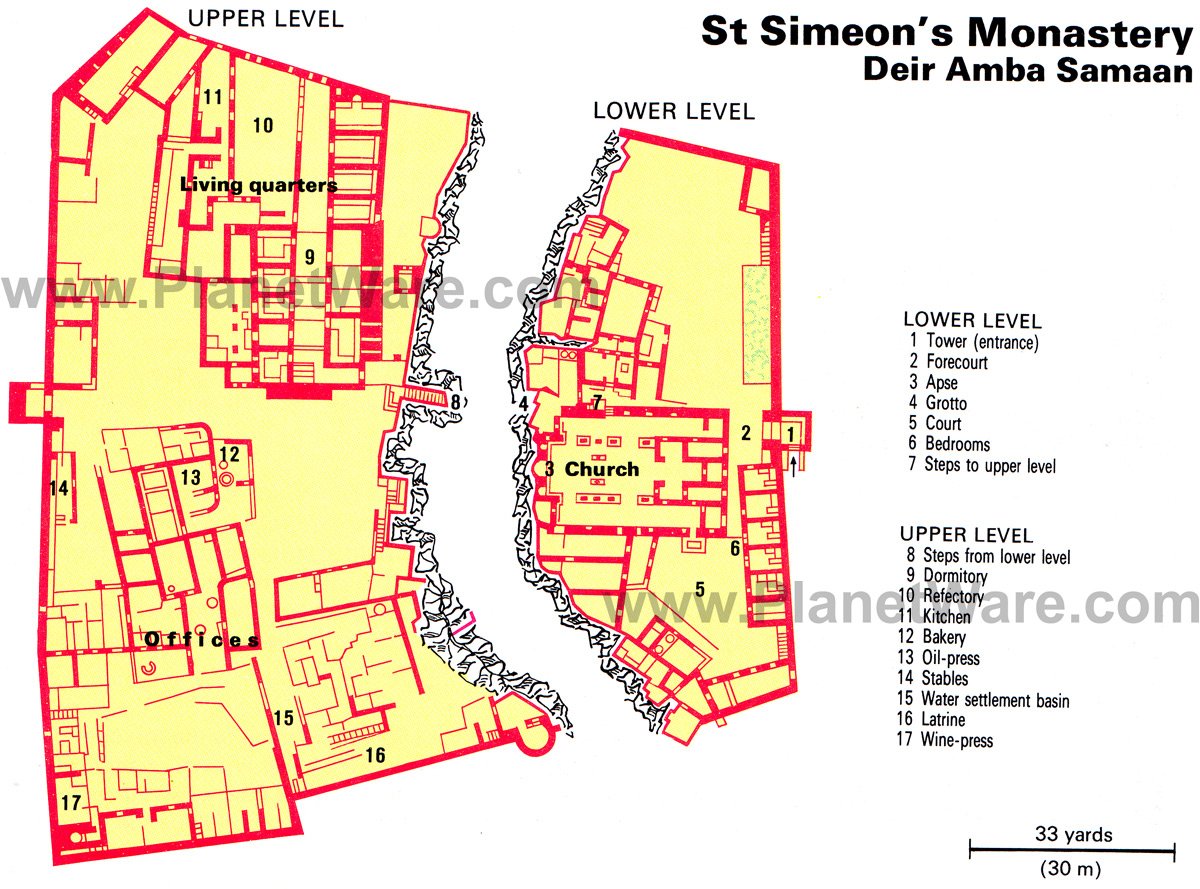 St Simeon's Monastery Map
St Simeon's Monastery Map7 Tombs of the Nobles
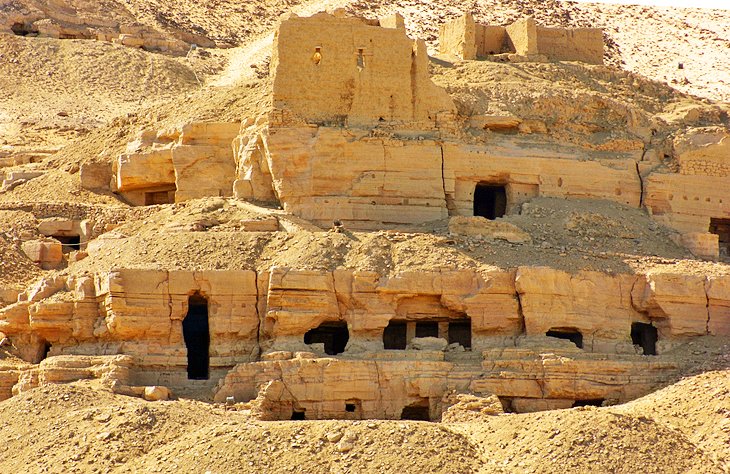
This series of rock tombs chiseled out of the West Bank's cliffs were where Elephantine Island's governors, priests, and other grandees were buried during the Old and Middle Kingdoms. They're accessed by a series of steep staircases just to the left of Gharb Aswan's boat landing.
The first tombs you enter are Tombs 25 & 26 where 6th-dynasty governors Mekhu and Sabni were buried. The artistry in both is somewhat simple and roughly worked. Up the path to the right is Tomb 31, belonging to Prince Sarenput II, a contemporary of King Amenemhet II of the 12th dynasty. This is one of the largest and best preserved tombs in the necropolis. Beyond the tomb chamber is a small corridor with three niches on either side. Look to the left of the first niche to see a figure of the dead man and his son with excellently preserved colors.
Tomb 34 (Harhuf's tomb) contains inscriptions recording successful trading expeditions in Nubia. A flight of steps from here leads up to the Tomb of Setka (First Intermediate Period), which has badly-damaged wall paintings that still have astonishingly vivid colors and are among the few surviving examples of the decorative art of this period.
Location: West Bank
8 Kalabsha
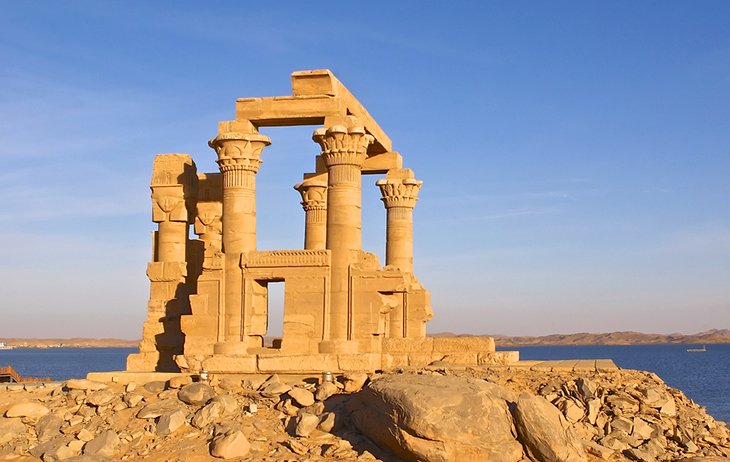
This group of temples were all saved from a watery end by UNESCO's rescue project and now sit on the banks of Lake Nasser. Kalabsha Temple is the best preserved of the three temples here and also the youngest, dating from the time of Roman Emperor Augustus. The most imposing monument in Nubia after the Temple of Abu Simbel, it was built on the site of an earlier temple founded by Amenhotep II and re-founded during the Ptolemaic Dynasty. The decoration was never completed and the reliefs that do exist are crudely executed. During the Byzantine era the temple was converted into a church.
Just to the northwest is the Temple of Beit el-Wali ("House of the Holy Man") built by Ramses II and consisting of a vestibule, transverse chamber, and sanctuary. There are lively historical reliefs throughout the interior depicting many of Ramses II's battles and triumphs including the king's triumph over the Kushites and his wars with the Syrians and Libyans.
Tiny Kertassi Temple sits just to the north and has two Hathor columns at the entrance and four other columns with elaborate floral capitals.
Taxis to Kalabsha can be easily hired in Aswan and a trip here is best combined with a visit to Philae.
Location: 20 kms south of Aswan
9 Aga Khan Mausoleum
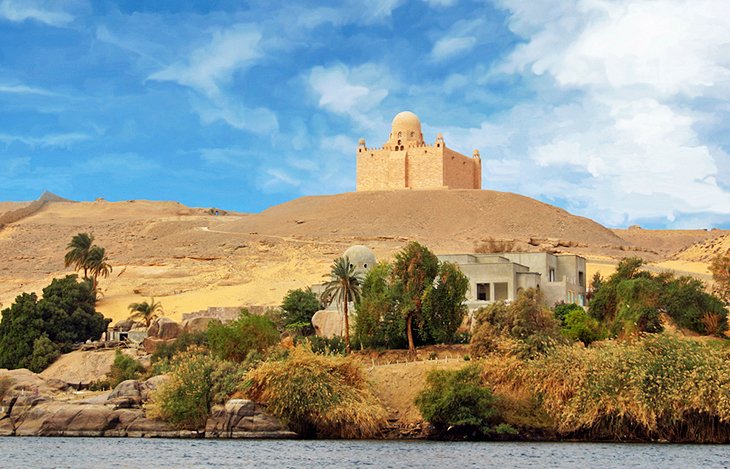
Presiding prominently atop of the West Bank's cliff, the Aga Khan Mausoleum was built to hold the tomb of Sir Sultan Muhammad Shah (1877-1957), leader of the Shi'a Islam Nizari Ismaili sect. He is chiefly remembered for his various charitable acts, setting up educational and medical institutions throughout Africa and Asia, as well as for the influential role he played in discussions about the partition of India. Although born in Karachi (then part of India under British colonial rule), the Aga Khan often summered with his family in Aswan and so had a deep connection to this part of Egypt. You can't visit the actual mausoleum, but you're sure to spot it sitting high above the Nile's bank.
Location: West Bank
10 Old Cataract Hotel
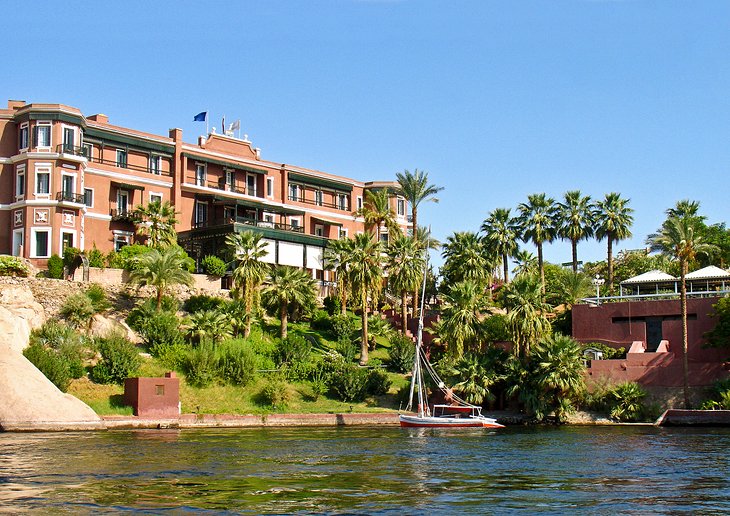
The ornate facade and lush gardens surrounding this old-timer hotel are one of Aswan's major river bank landmarks and impossible to miss if you're taking a sightseeing sailing trip around Aswan aboard a felucca. The hotel's biggest claim to fame is that Agatha Christie wrote part of Death on the Nile while staying here, and the hotel also featured in the movie based on the novel. If you want to do an "Agatha" but don't have the money to stay here, the hotel's terrace is the de rigueur place to have high-tea in town. Drinking tea while feasting on a very English selection of scones and sandwiches and basking in the stunning views across the Nile to Elephantine Islandand the sand dunes of the West Bank beyond is about as close as you'll get to the great lady herself.
Address: Abtal el-Tahrir Street
11 Western Quarry (Gebal Simaan)
For archaeological-fiends, Aswan's Western Quarry makes an interesting trip. It was from here that much of ancient Egypt's most recognisable statuary began their life; chiseled out of the hillside of Aswan granite. Archaeologists think that Luxor's mammoth Colossi of Memnon come from this quarry. Today, you can still see the tracks where huge blocks of stone were dragged to the river for their journey down the Nile to grace the temples of the pharaohs. There are no roads here, so if you're up for a camel adventure, a visit here is also plenty of fun. Camel drivers can be hired at the Gharb Aswan boat landing and the trek takes about 30 minutes.
Location: West Bank
12 Souq Area
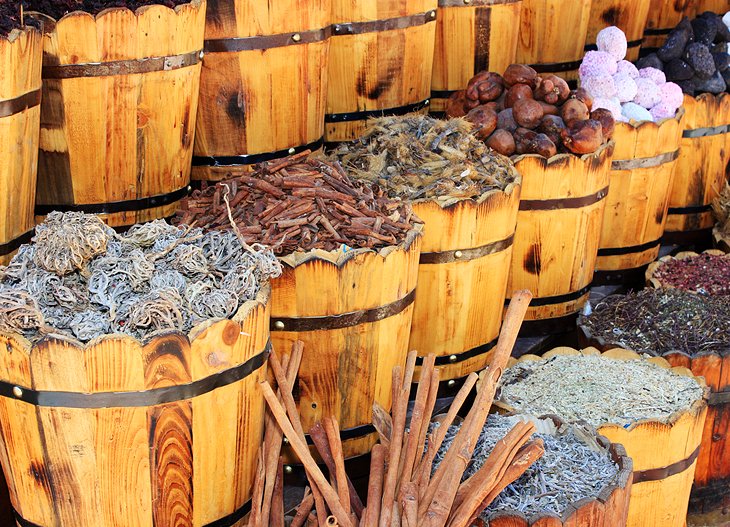
Location: Sharia al-Souq
Day Trips from Aswan
Abu Simbel
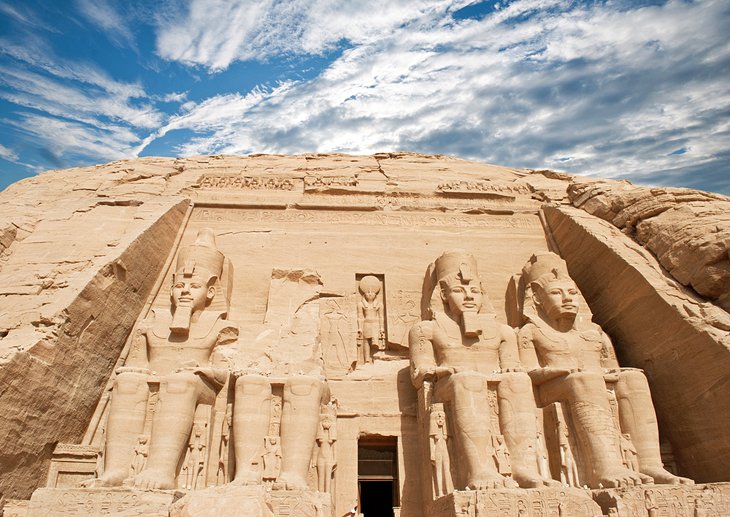
Location: Lake Nasser area, 280 kms south of Aswan
Wadi al-Subua
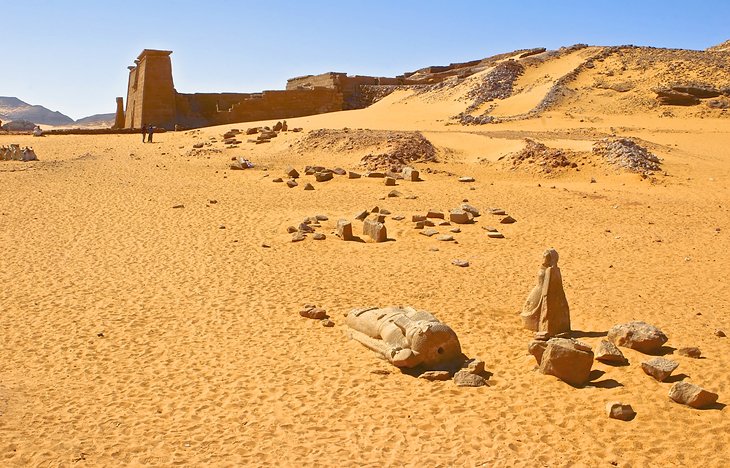
Location: Lake Nasser area, 170 kms south of Aswan

